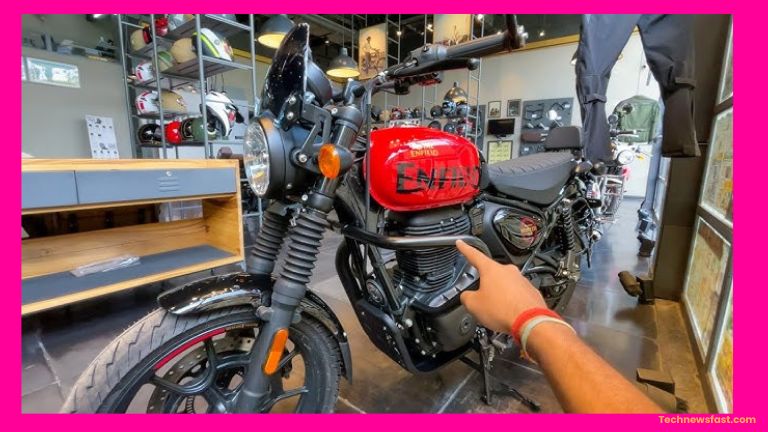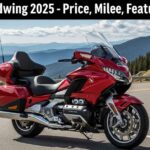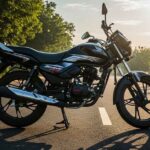Are you searching for a bike that’s fun for city rides, trustworthy for daily commutes, and still able to handle a quick highway run? The Royal Enfield Hunter 350 has sparked a lot of conversation among new riders, seasoned commuters, and even a few weekend explorers. In this guide, I’ll break down what the Hunter 350’s engine numbers really mean, how it feels in real life, and what real owners (including myself) have learned over months of riding. You’ll get the facts, honest pros and cons, and practical advice before you decide if this bike fits your life.
Hunter 350 Engine Power & Torque: What The Numbers Mean in Daily Life
The Hunter 350 runs on a 349cc, air-cooled, single-cylinder SOHC J-series engine. On paper, it puts out 20.2 bhp at 6100 rpm and 27 Nm of torque at 4000 rpm. But what do those numbers actually feel like when you’re twisting the throttle on a weekday morning?
- Power output (20.2 bhp): This doesn’t sound wild, but in the world of urban bikes, it’s more than enough to dart through city traffic. You’ll notice a calm, predictable surge rather than a wild rush—think of it as a dependable friend helping you merge into moving traffic, not a sprinter taking off.
- Torque (27 Nm): The real star here is the torque. It peaks low in the rev range, so there’s no need to wring the throttle to get moving. At traffic lights, the Hunter 350 feels eager, pushing forward with just a hint of twist.
- Highway speed: You’ll cruise comfortably at 80–90 km/h (about 50–55 mph). Overtaking at these speeds is steady but not instant. If you’re used to smaller commuter bikes, the Hunter’s pickup feels strong. Compared to sportier 250cc machines, though, it’s more about steady confidence than neck-snapping acceleration.
For more on the detailed engine specs, check out the official Hunter 350 specifications.
Throttle Response & Everyday Usability
The fuel-injected engine offers a smooth, predictable response. There’s a gentle curve as you roll open the throttle—no sudden jerks or unexpected surges. In bumper-to-bumper city traffic, the slip-and-assist clutch is a big relief. The clutch pull is light, and gear shifts require minimal effort.
- Stop-and-go traffic: The engine stays composed, and you rarely feel stressed juggling the clutch and throttle.
- Low-speed control: Balancing at crawling pace is easy, so U-turns and tight corners aren’t a chore.
- Agility: The lightweight chassis, combined with the linear power delivery, makes the Hunter 350 nimble for weaving through traffic. Yet on open stretches, it settles into a relaxed hum instead of buzzing at high rpm.
Riding Comfort and Handling: Suspension and Weight Distribution
Royal Enfield has tuned the Hunter for city agility. The rear twin-tube emulsion shock absorbers soak up most bumps well. The 17-inch wheels and sharp steering geometry make it feel quicker to turn than the Classic 350 or Meteor.
- Cornering: Hunter 350 leans into bends confidently. You might even forget you’re riding a Royal Enfield—it feels almost playful.
- Bumps and potholes: The suspension is firm, so you’ll notice sharp edges on really rough roads. Over longer distances, the ride can feel a bit stiff if you’re used to softer setups.
- Sudden stops: The braking is reassuring, especially with the dual-channel ABS variant. The bike remains stable, and you won’t get that squishy, nose-diving feel some light bikes have.
The Real Riding Experience: How The Hunter 350 Feels on the Road
The engine carries Royal Enfield’s signature thump, but it’s smoother and more refined. Vibrations are present, mostly at higher speeds, but at city cruising pace, the ride feels composed.
- Clutch and gear shifts: Movements are light, with a positive, mechanical click. False neutrals are rare.
- Braking confidence: You get a solid, progressive bite from the front disc. The rear brake is easy to modulate.
- Noise levels: The exhaust note is muted but recognizable—a classic Royal Enfield thump, not too loud but genuinely satisfying.
Owners often comment that the Hunter feels lighter and more agile than other Royal Enfield 350cc models. It’s less intimidating and more approachable for new riders. Compared to rivals like the Honda CB350, the Hunter delivers a uniquely blend of simplicity and old-school charm without feeling sluggish.
Fuel Efficiency & Maintenance: Living With The Hunter 350
Most owners report real-world fuel economy between 38–44 km/l (about 90–102 mpg). With a 13-liter tank, that’s up to 500 km of range on a full tank—plenty for daily commutes or a weekend ride to a neighboring town.
- Maintenance costs: Basic service usually costs between £150–180 per year. Oil changes, chain adjustments, and brake inspections are straightforward.
- Practical tips: Clean the chain often, keep tire pressure in check, and don’t ignore little rattles or warning lights.
- Reliability: Reports of breakdowns are rare, though some have noted small issues like fork seal leaks or minor electrical niggles. Parts are widely available, and most fixes are quick.
What Owners Love—And What They Wish Was Better
What’s Great:
- Nimble, lightweight feel—easy for anyone to ride
- Classic Royal Enfield styling, modern touches
- Affordable to buy and run
- Reliable, fuel-efficient engine
- Simple, easy-to-maintain mechanics
Common Complaints:
- Suspension can feel stiff on really bad roads
- Tyre grip is adequate but not sporty
- Lacks high-tech features like a TFT dash or advanced electronics
The Hunter 350 suits riders who want simple, stylish fun for city use, new riders looking for a confidence-boosting first bike, or even seasoned commuters who prioritize reliability over outright speed. If your routes are filled with rough patches or you want a bike for long highway touring, you might find the suspension a bit firm and the power a bit modest. Personally, I enjoy its easy-going spirit and practical charm, though I wish the ride was a touch softer on broken tarmac.
Conclusion
The Royal Enfield Hunter 350 stands out for its usable torque, everyday practicality, easy handling, and cost-effective ownership. It’s not built for high-speed thrills or loaded with tech, but it nails the basics—reliable power, comfort for daily rides, and a style that turns heads. Before committing, think about your needs: is city agility or highway comfort more important? Do you value character over gadgets?
Read also.







